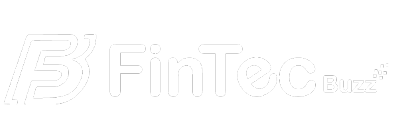1. Choosing between self-hosted vs. cloud e-commerce
1.1 Self-Hosted
1.2 Cloud-Based
2. Top 3 E-commerce Solution Providers
2.1 Sana Commerce Cloud (SCC)
2.2 Adobe Commerce
2.3 BigCommerce
3. Features to look for
3.1 Out-of-the-Box Capabilities
3.2 Integration Potential
3.3 E-commerce Costs
3.4 Time to Market
3.5 Relevant Experience
3.6 Culture Fit
3.7 Support Capabilities
4. Parting thoughts
Choosing the correct e-commerce solution is like choosing what the foundation of your online store will be. Business owners, decision-makers, e-commerce managers, marketing teams, and project managers—this one’s for you! Let’s dive deep into the three main categories of e-commerce solutions to equip you with the know-how to choose correctly.
Open-source platforms:
Open-source solutions like Magento are ideal options for businesses with unique needs and in-house development resources, as they offer high customizability and control. Whereas, in setting up and maintenance, they require a high degree of technical expertise.
SaaS (software-as-a-service) platforms:
User-friendly and scalable, a SaaS platform such as Shopify or BigCommerce will provide the entire package: storefront creation, hosting, maintenance, and you name it. That makes them a perfect match for all companies looking for a headache-free experience, accompanied by flexibility to adapt once they grow.
Headless commerce:
A headless solution decouples the front end—the customer experience—from the back end, for example, business logic. A headless solution allows maximum flexibility for a business with complex needs and a desire for a truly tailor-made storefront experience, though it needs well-leveled implementation.
1. Choosing between self-hosted vs. cloud e-commerce
The creation of an online store is not just an exciting step but also a tenancy of a critical decision. But self-hosted or cloud-based e-commerce? Knowing the strengths and weaknesses of each approach empowers you to select the best platform with respect to your technical expertise, budget, and growth aspirations.
1.1 Self-Hosted:
Self-hosted solutions give you the highest level of control and customization; however, you will need to maintain your server infrastructure and software. So, technical proficiency and maintenance are a must on this path, but this enables freedom to deal with the functionality of your store.
1.2 Cloud-Based:
Cloud platforms abstract server management and software updating, allowing focus on the business. They are mostly user-friendly and scalable—perfect for when your business is just starting up or if you want to avoid having too many hassles. There won’t be advanced customization like in self-hosted solutions.
Everything depends on your technical skills, budget, and what level of control you want. Consider the level of complexity that your team can handle; agree on how complex you think the online store should be. The cloud enables fast time-to-market and a low upfront cost, while self-hosted platforms work for those who want full customization.
2. Top 3 E-commerce Solution Providers
The choice of e-commerce technology is a strategic one. It will work well for businesses of all sizes. Now, let us go into details about industry leaders like Sana Commerce Cloud, Adobe Commerce, and BigCommerce, where we see their pros and cons to help make an informed decision.
2.1 Shopify
- Shopify caters to B2C sellers with its user-friendly interface and extensive app store. It offers 24/7 support, making it ideal for startups and small businesses.
- However, customization options are limited, free features are restricted, and scalability can be an issue for high-traffic businesses.
2.2 Adobe Commerce
- It caters to enterprises that have large volumes, advanced customization, and marketing features.
- Needs much technical expertise when setting up and maintaining.
2.3 BigCommerce
- Being user-friendly, it is very appropriate for companies with simple requirements or those that are getting started in business.
- Having an excellent set of features natively, to which it adds a very reasonably priced model and is highly flexible too.
Remember: This is not everything. Things like budget, technical skills, and growth plans that are in the right mix for your business must be considered.
3. Features to look for
An e-commerce solution needs to be solid enough to assure the backbone of your business, but the choice will leave one with a headache considering the available options at hand. The aim of this section is to raise as much awareness as possible for you, the business owner, the independent e-commerce manager, or probably one of the marketing team members and the project manager. We’ll go through two key features to look for:
3.1 Out-of-the-Box Capabilities:
Ensure that the platform delivers core features such as product management, shopping carts, secure payment processing, and basic marketing tools—a foundation from which you would have a generally efficient online shop.
3.2 Integration Potential:
Comfortable integration with already existing systems like CRM, inventory, and marketing tool solutions is essential to creating smooth-running operations and data flow.
3.3 E-commerce Costs:
Consider the upfront, subscription, and transaction charges. Go for a solution that best fits your wallet and provides room for the growth of your business.
3.4 Time to Market:
How long does it take you to put your online store into action? A user should rather shift towards easily accessible user interfaces and readily available features to reduce delays in their launch.
3.5 Relevant Experience:
Does the e-commerce solution provider have industry experience or experience with companies of your size? Find partners who can prove their successful cases concretely in your market.
3.6 Culture Fit:
Apart from technical expertise, the culture should also be taken into account—the values a provider has. Are they aligned with yours? This paves the way for smooth collaboration and effective communication during the execution process.
3.7 Support Capabilities:
Responsive, reliable support is important to work out technical glitches and restore a platform completely. Check options for support and the pace at which a given provider responds so that you’re guaranteed that they will be available when the need arises.
Prioritization of these features will move you to the forefront in choosing an e-commerce solution that gives your business a better likelihood of being successful in the digital marketplace today.
4. Parting thoughts
The e-commerce solution you opt for creates the prime basis for the success of your online business. Finding a well-matched platform that will customize your business according to your needs, work effectively, and change your sales is of prime importance.
Consider the fact that there is no one-size-fits-all solution. Carefully consider the features against the pricing models and how far the provider can support them. Feel free to use highly professional consultations or go through customer reviews for insight that is valuable. This will make sure that your informed choice perfectly aligns with your ideals in business, moving your e-commerce journey further.
Stay Ahead of the Financial Curve with Our Latest Fintech News Updates!




